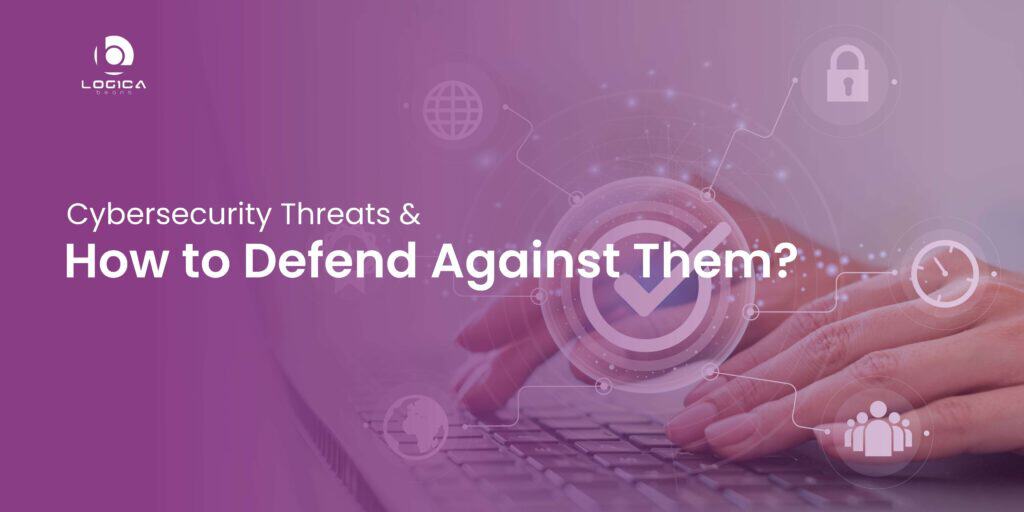[mc4wp_form id=”2320″]
Latest Cybersecurity Threats and How to Defend Against Them
-
October 8, 2025
- Posted by: Evans Asare

Latest cybersecurity threats and how to defend against them. In today’s hyper-connected world, cybersecurity threats are evolving faster than ever. Attackers no longer rely on old-fashioned viruses; instead, they use artificial intelligence, automation, and complex social engineering to breach systems and steal information. As digital transformation accelerates, individuals and organizations must strengthen their defenses to stay ahead. Let’s explore the five most common latest cybersecurity threats and practical ways to protect against them.
1. AI-Driven and Deepfake Attacks
Artificial intelligence now fuels some of the most sophisticated cyber threats. Criminals use AI tools to craft personalized phishing emails, realistic voice messages, or even deepfake videos that impersonate trusted individuals. These manipulative tactics make it easy to deceive even cautious users.
Defense:
To fight back, combine multi-factor authentication (MFA) with continuous monitoring for unusual activity. Encourage staff or family members to verify suspicious messages before responding. Moreover, organizations should invest in AI-powered detection tools that can spot manipulated videos or fraudulent behavior early.
2. Ransomware-as-a-Service (RaaS)
Ransomware has become more accessible than ever through “Ransomware-as-a-Service” platforms. Cybercriminals can now purchase pre-made attack kits online, making it simple to encrypt systems and demand payment. Recently, attackers have also turned to “double extortion,” threatening to release stolen data publicly.
Defense:
To minimize damage, keep offline data backups and test them regularly. Update all systems and close vulnerabilities quickly. In addition, develop an incident response plan so everyone knows how to react if ransomware strikes. Speed and preparation often make the difference between quick recovery and lasting damage.
3. Supply Chain and Third-Party Attacks
Instead of attacking large organizations directly, hackers now infiltrate smaller partners or software vendors first. Once inside, they move laterally through the supply chain, targeting interconnected networks.
Defense:
Evaluate your suppliers’ cybersecurity standards before sharing access. Apply the principle of least privilege, granting partners only the access they truly need. Also, monitor vendor activities and require regular security audits to ensure compliance. A chain is only as strong as its weakest link.
4. IoT Device Vulnerabilities
The rise of smart devices—from home assistants to industrial sensors—creates thousands of new entry points for hackers. Many Internet of Things (IoT) devices ship with weak passwords or outdated firmware, making them easy targets.
Defense:
Immediately change default passwords, and separate IoT devices onto a different network from critical systems. Update firmware often, and remove devices that no longer receive manufacturer support. By isolating and maintaining IoT equipment, you can prevent small gadgets from becoming big security risks.
5. Zero-Day Exploits
A “zero-day” vulnerability refers to a flaw that developers have not yet patched—and that attackers can exploit right away. Because no fix exists initially, these exploits can cause widespread damage before security teams even know what happened.
Defense:
Adopt a proactive vulnerability management program. Use automated scanners to detect weaknesses early and apply patches as soon as updates appear. Moreover, deploy behavior-based intrusion detection systems that identify unusual actions even when the specific vulnerability is unknown.
Conclusion: Staying Ahead of the Attackers
Cybersecurity is no longer optional—it’s essential for survival in the digital age. Threats like deepfake scams, ransomware, and supply-chain breaches are growing more dangerous by the day. However, with consistent awareness, layered defenses, and a zero-trust mindset, individuals and organizations can dramatically reduce their risk.
Ultimately, staying secure means staying informed. By updating defenses, training users, and adopting smart technologies, you can transform cybersecurity from a constant fear into a confident strength.
